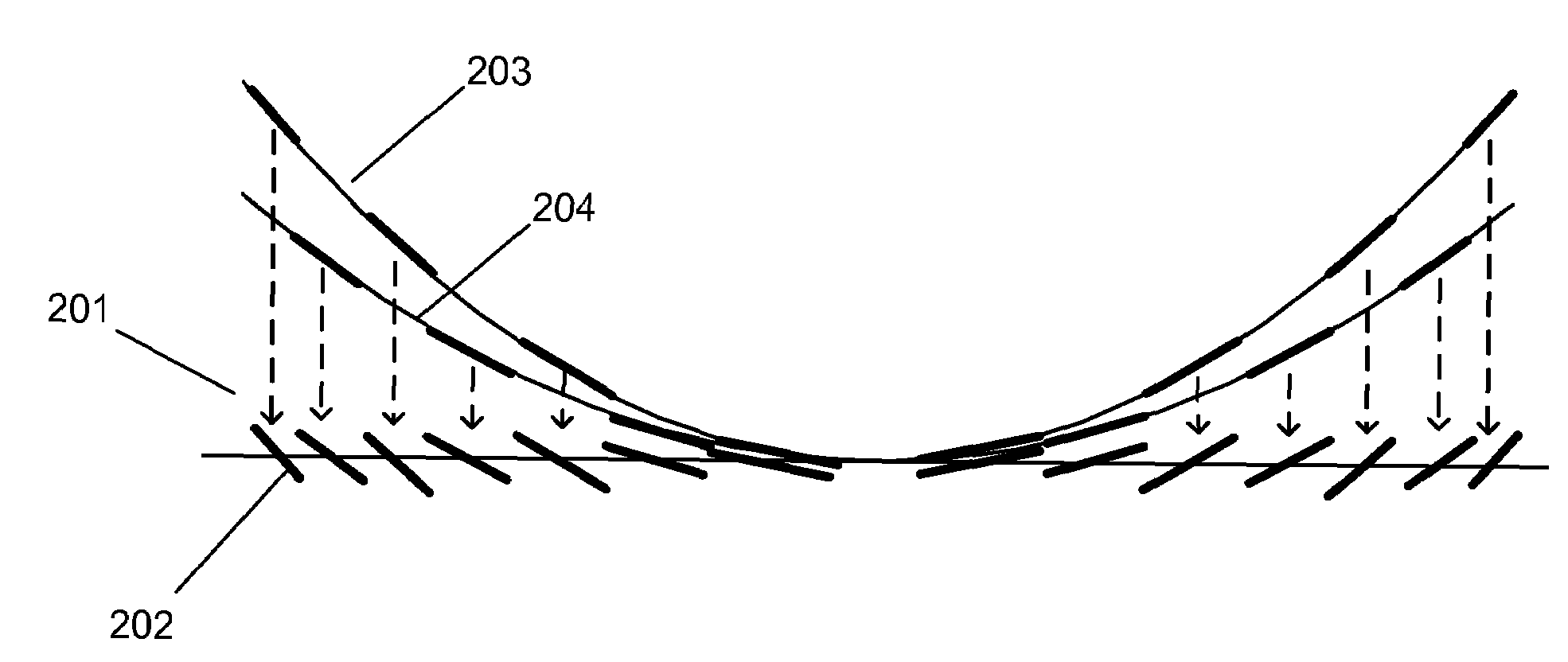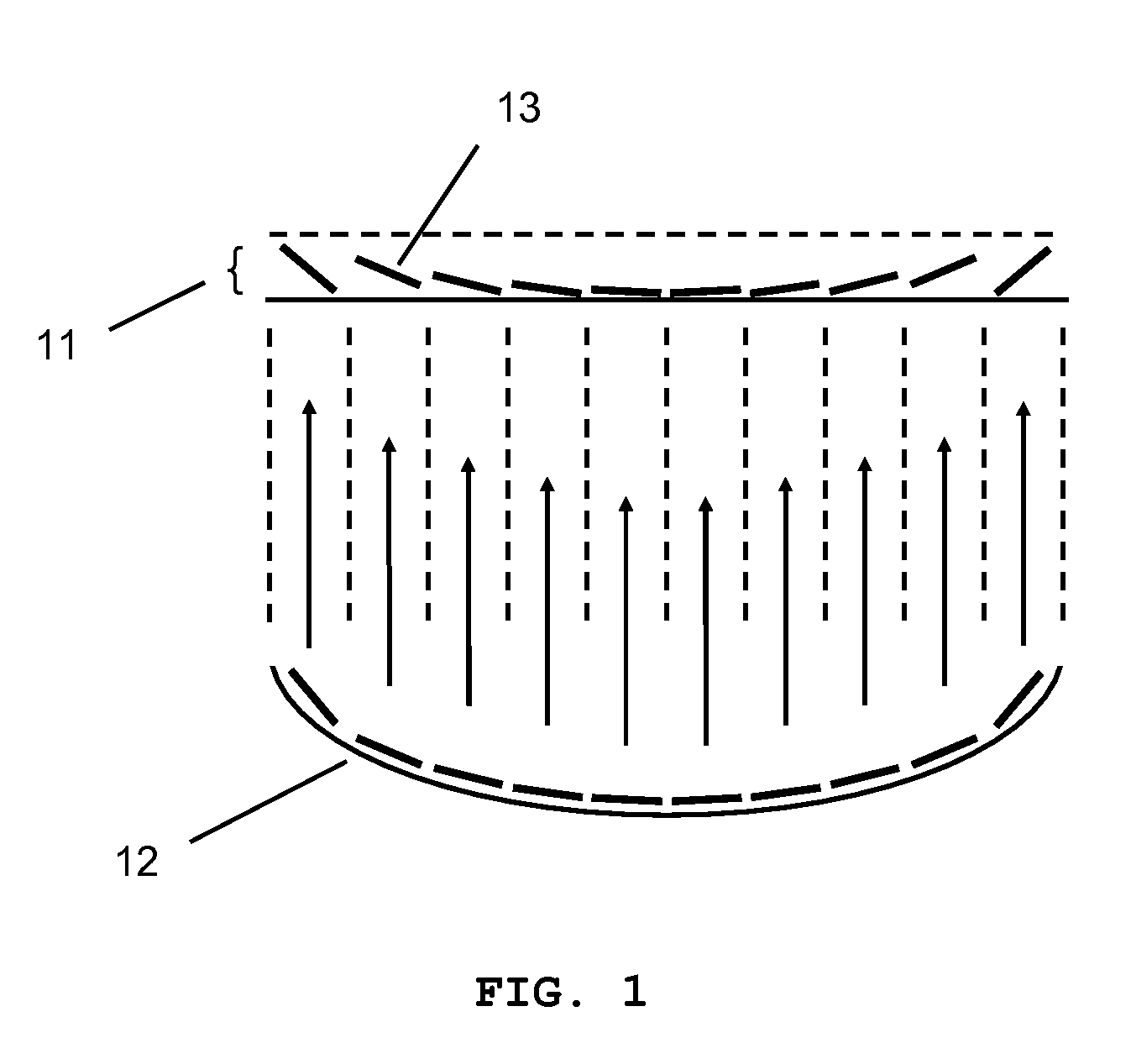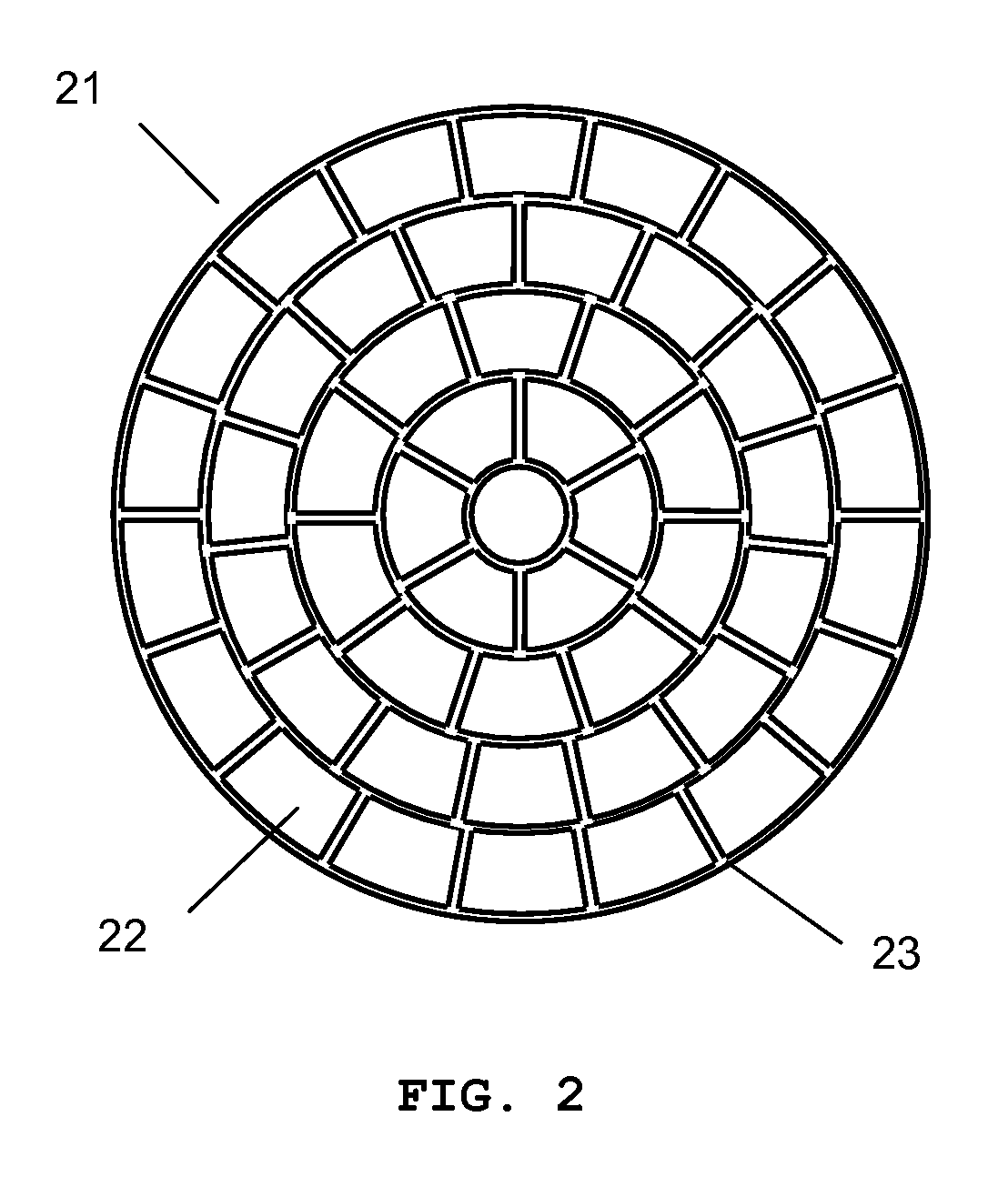Micromirror array lens with optical surface profiles
a micromirror array and lens technology, applied in the direction of mirrors, mountings, instruments, etc., can solve the problems of increasing aberration caused by spherical lenses, unable to make parallel rays converge into one point, and inability to achieve high performance especially for a large aperture lens system, so as to improve the design and control of the micromirror array lens
- Summary
- Abstract
- Description
- Claims
- Application Information
AI Technical Summary
Benefits of technology
Problems solved by technology
Method used
Image
Examples
Embodiment Construction
[0085]A Micromirror Array Lens comprises a plurality of micromirrors arranged on a flat or a curved surface to reflect incident light. The micromirrors are configured to have at least one motion. The Micromirror Array Lens has at least one optical surface profile to form at least one optical element reproducing at least one free surface by using the motions of the micromirrors. The free surface can be any two or three-dimensional continuous or discrete reflective surface. The Micromirror Array Lens having the corresponding optical surface profile provides optical focusing properties substantially identical to those of the free surface.
[0086]FIG. 1 illustrates the principle of a Micromirror Array Lens 11 schematically. The Micromirror Array Lens 11 comprises a plurality of micromirrors 12 and replaces an ordinary single-bodied free surface 13. The Micromirror Array Lens 11 forms a refractive Fresnel lens or a diffractive Fresnel lens that satisfies the focusing properties of the ordi...
PUM
 Login to View More
Login to View More Abstract
Description
Claims
Application Information
 Login to View More
Login to View More - R&D
- Intellectual Property
- Life Sciences
- Materials
- Tech Scout
- Unparalleled Data Quality
- Higher Quality Content
- 60% Fewer Hallucinations
Browse by: Latest US Patents, China's latest patents, Technical Efficacy Thesaurus, Application Domain, Technology Topic, Popular Technical Reports.
© 2025 PatSnap. All rights reserved.Legal|Privacy policy|Modern Slavery Act Transparency Statement|Sitemap|About US| Contact US: help@patsnap.com



